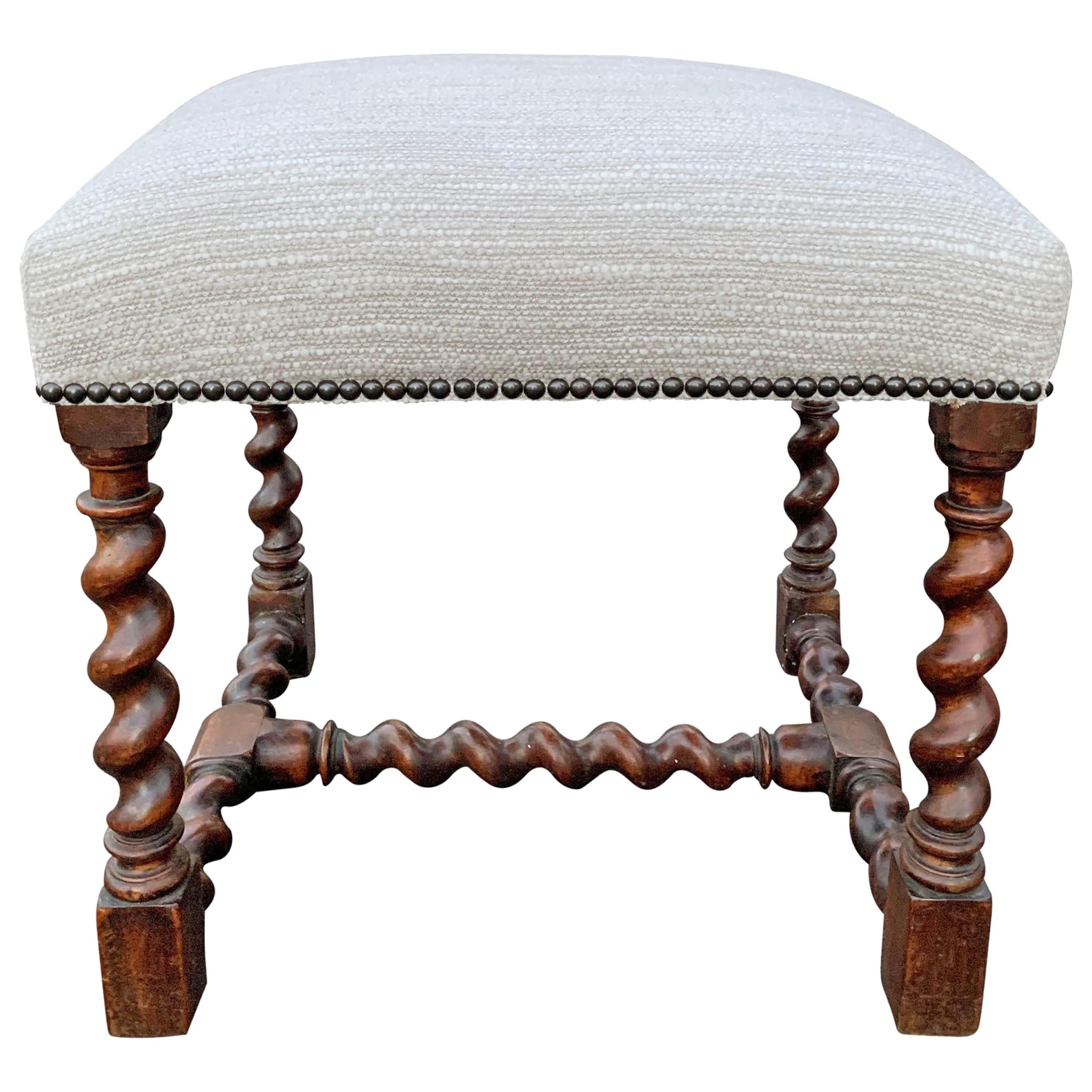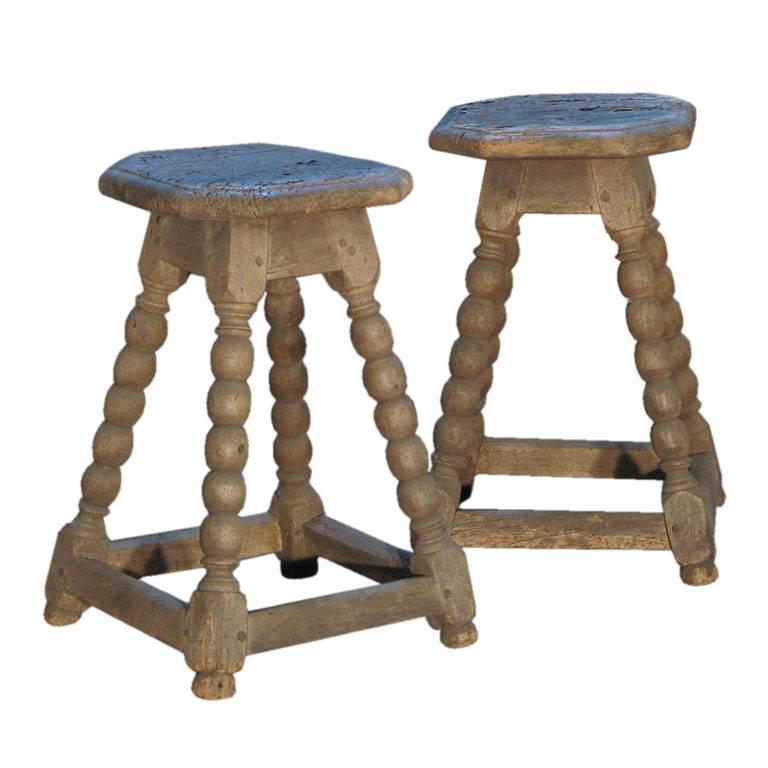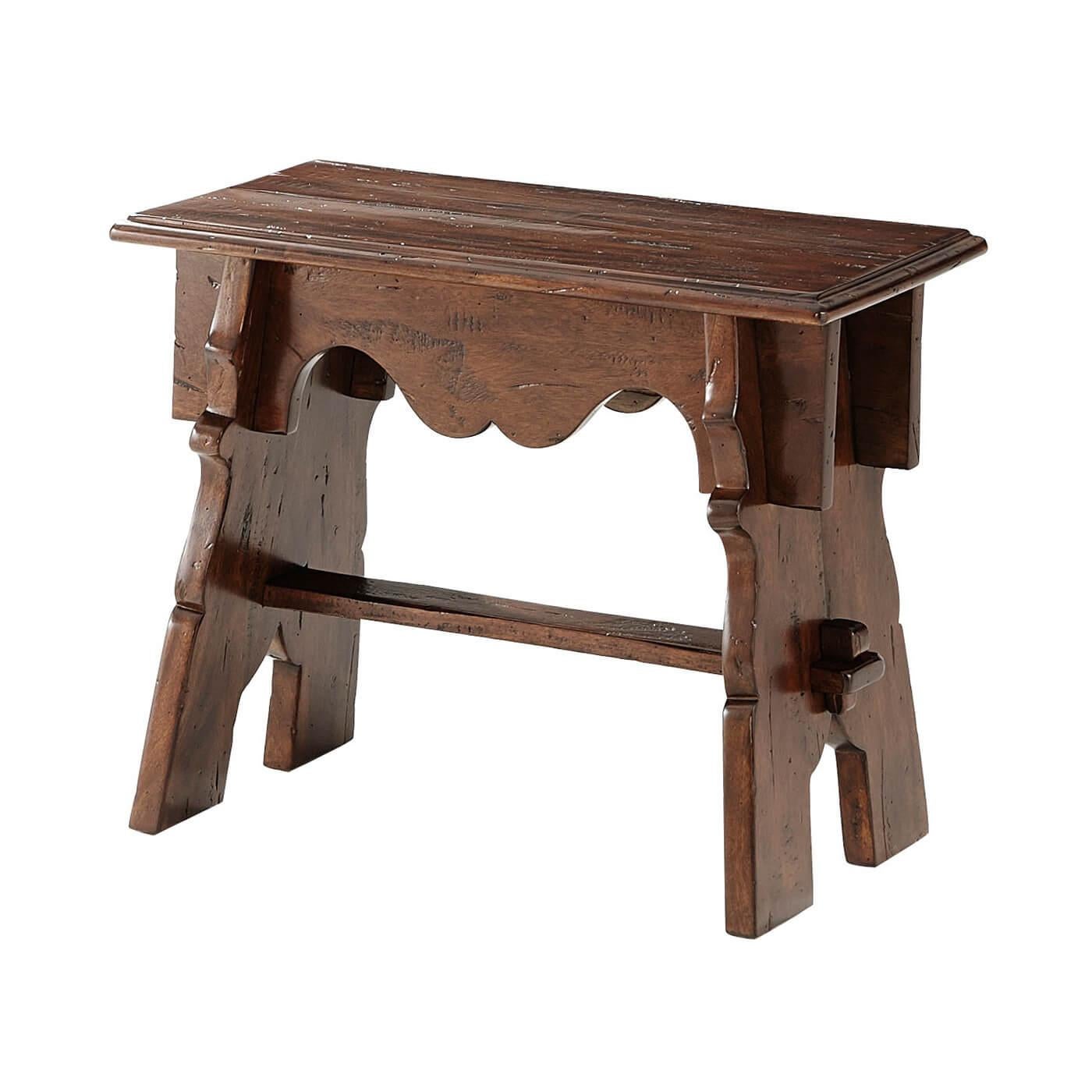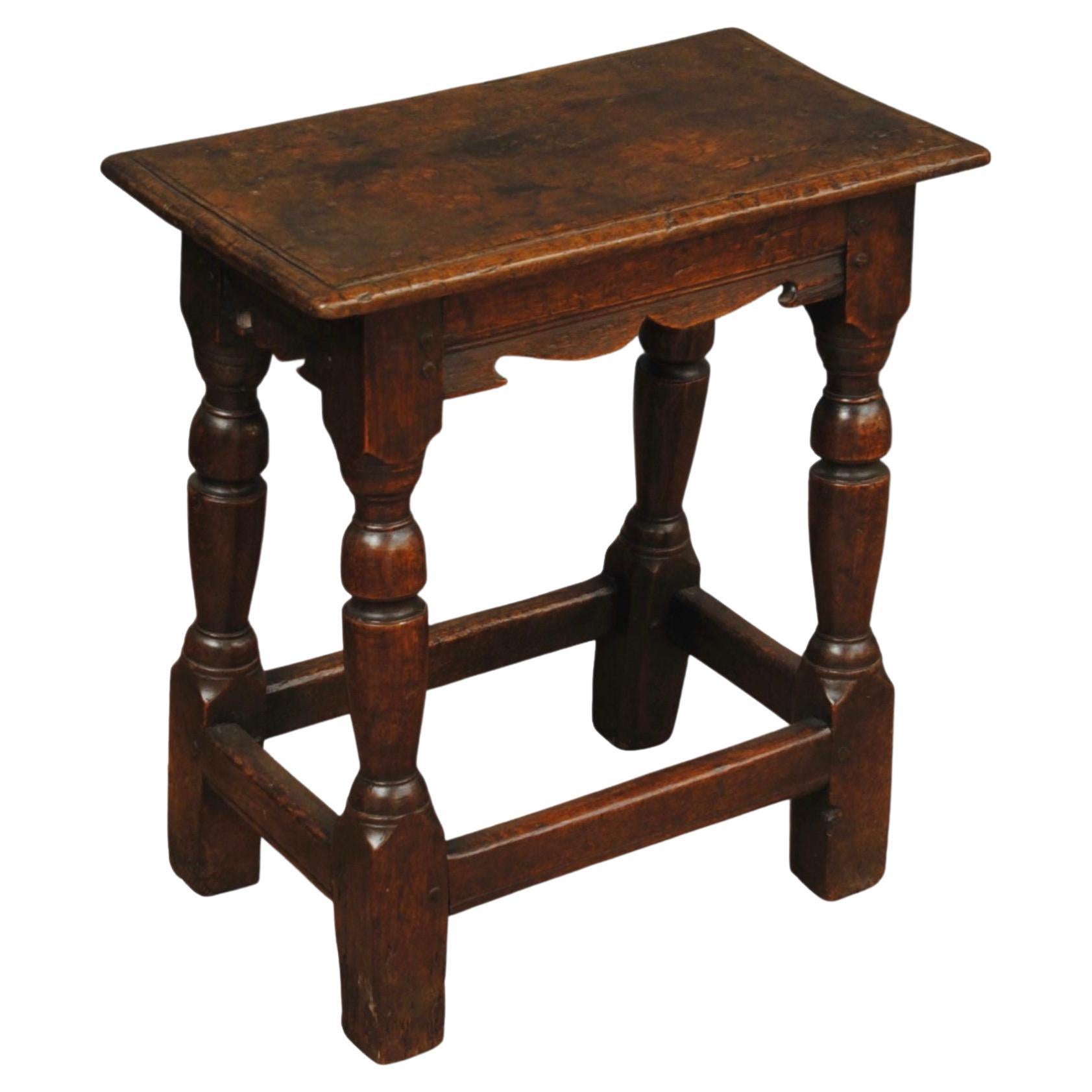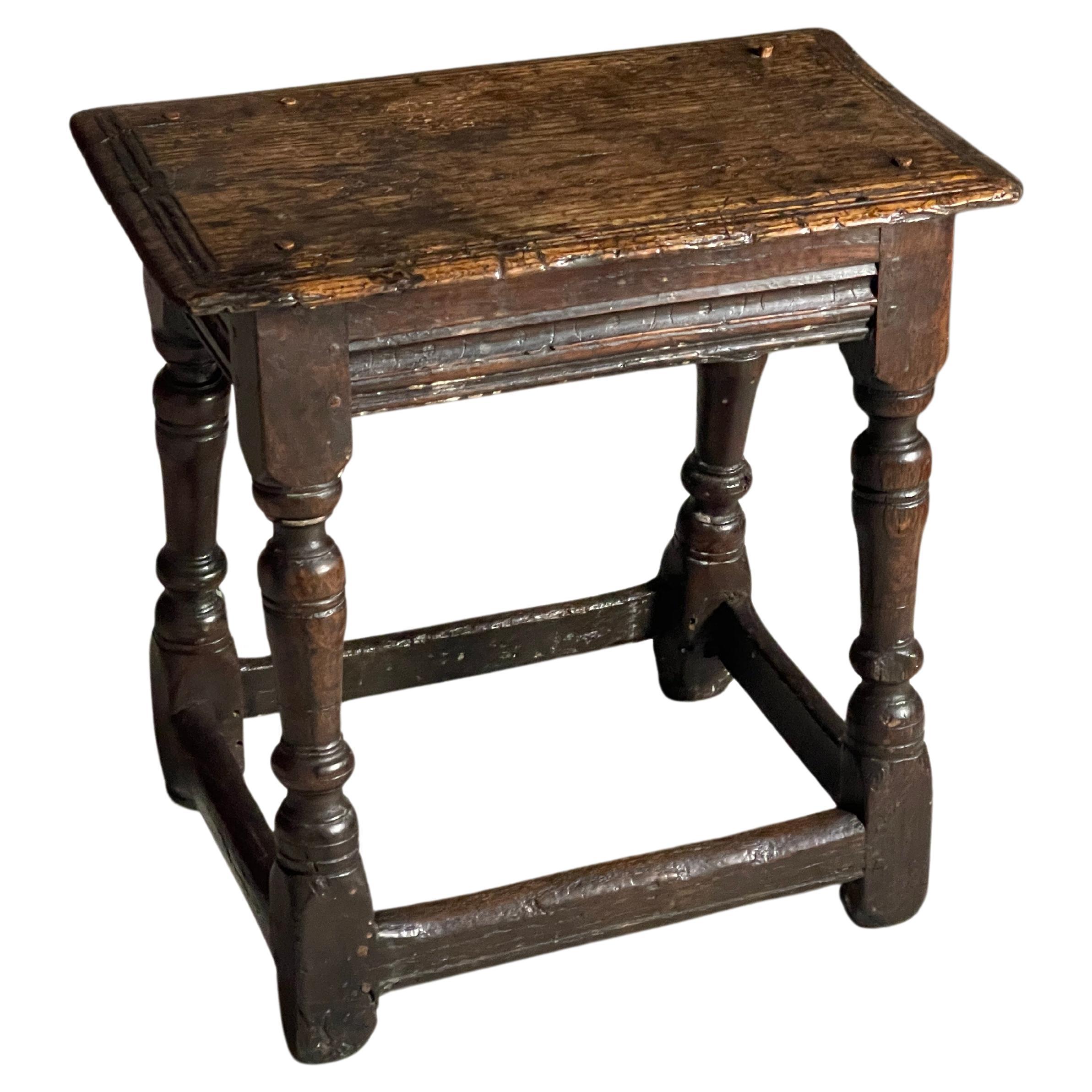Items Similar to Italian 17th Century Walnut and Leather Stool
Want more images or videos?
Request additional images or videos from the seller
1 of 5
Italian 17th Century Walnut and Leather Stool
About the Item
Italian 17th century walnut and leather stool
H 41 x L 72 x P 42 cm
cylindrically turned legs and beautifully decorated ancient leather upholstery.
Very good condition, restoration to part of the leather (see picture).
- Dimensions:Height: 16.15 in (41 cm)Width: 28.35 in (72 cm)Depth: 16.54 in (42 cm)
- Style:Louis XIII (Of the Period)
- Materials and Techniques:
- Place of Origin:
- Period:
- Date of Manufacture:17th Century
- Condition:Wear consistent with age and use. restoration to part of the leather (see pictures).
- Seller Location:Bruxelles, BE
- Reference Number:1stDibs: LU6666231645712
About the Seller
5.0
Vetted Seller
These experienced sellers undergo a comprehensive evaluation by our team of in-house experts.
1stDibs seller since 2022
6 sales on 1stDibs
Typical response time: 7 hours
- ShippingRetrieving quote...Ships From: Bruxelles, Belgium
- Return PolicyA return for this item may be initiated within 3 days of delivery.
More From This SellerView All
- Cerberus, Italy, 17th CenturyLocated in Bruxelles, BECerberus Black painted stone Italy, 17th century Measures: 80 x 69 x 36cm (one head missing) Cerberus, cruel monster, fierce and strange, Through his wide threefold throat barks as a dog Over the multitude immers'd beneath. His eyes glare crimson, black his unctuous beard, His belly large, and claw'd the hands, with which He tears the spirits, flays them, and their limbs Piecemeal disparts (Dante, Inferno, Canto VI). Cerberus figure seated, in his role of ferocious guardian of the underworld; he shows a nervous musculature, an adherent skin which reveals the ribs, long and robust limbs; his heads are broad and the eyes set well apart. Painted in black to amplify his menacing look, the infernal guardian is depicted with his famous attributes, writhing his heads, growling and barking furiously. Cerberus, in Greek mythology, was the monstrous watchdog of the underworld – also known as the “hound of Hades” – preventing the dead from leaving, and making sure that those who entered never left. A child of Typhon and Echidna, he was part of a monstrous family, which included Orthus, the Lernaean Hydra, and the Chimaera as well. Only on three occasions Cerberus was tricked by visitors of Hades: Heracles did it with his strength, Orpheus with his music. In "The Inferno", Dante places Cerberus as the guardian of the third circle of Hell. With his three mouths, Dante saw Cerberus as a beast that was synonymous with the sin of Gluttony. Virgil gets past the monster by throwing mud in his three mouths, temporarily choking him. Very rare are the representations of Cerberus in ancient statuary...Category
Antique 17th Century Italian Renaissance Figurative Sculptures
MaterialsStone
- Italian Memento Mori skull - 17th centuryLocated in Bruxelles, BEItalian Memento Mori skull Marble North of Italy, 17th century H 9 x L 7 x P 14 cm At the turn of the 16th century, they were the height of fashi...Category
Antique 17th Century Italian Renaissance Figurative Sculptures
MaterialsMarble
- Boiled Leather Trunk, Spanish, 17th CenturyLocated in Bruxelles, BELeather trunk Spanish, 17th century Boiled Leather, wood and iron Measures: 22 x 53 x 32 cm. Provenance : - collection Metz-Noblat, Château de Clevant, France Rectangular trunk of the form and size of a small suitcase with wrought iron hinges and lock-plate. Wood, covered with leather, cut and embossed with every surface of the thick cow hide covered in interlace, zoomorphic features. The construction method is boiled leather, often referred to by its French translation cuir-bouilli: a process used to change flexible, vegetable-tanned leather into rigid, moulded objects. For shaping of the vegetable-tanned leather, heat and moisture were used, as indicated by the term boiled leather. No written medieval sources describing the production of decorated cuir bouilli objects survive, so knowledge of the process relies on the important studies of the Scottish leather historian John William Waterer. A large range of methods, materials and techniques could be used in various combinations. The vegetable-tanned leather, made supple with moisture and heat, was stuffed, shaped and nailed to the rigid wooden coffer support. The stuffing material was probably modeled beeswax or stearin wax. To shape the leather, to create its topography, « Cushions » were made by lacing a thread through an awl hole and attaching the flexible leather and stuffing to the rigid wooden support on the bottom. Then the decoration was done: lines were incised through the upper layer of the leather (epidermis) with different thicknesses of knives or needles. Contours were created with deep v-shaped cuts, decoration with thin incision and final details with a needle point. For the incision and pouncing stage, the leather was probably kept heated and moistened for suppleness. Once dry, the leather would be hard and rigid. the saturated leather is worked over a form, possibly even damp sand, with the pattern shaped using bone or wooden tools. Compare to metal, leather was lighter and it offered protection from cuts and punctures. Cuir bouilli objects were produced by specialist leather workers and needed skillful craftsmanship. The surface is filled with roundels shaped foliages enclosing animals, lions and peacocks. The foliate arabesques creating a vegetal connection tweet the animals create the impression of a lush verdant space . The vegetal pattern here employed in combination with geometrical pattern came from the pre-islamic artistic traditions of the Byzantine and Sasanian empires. An aspect of Islamic geometry Is the basic symmetrical repetition and mirroring of the shapes that create a sense of harmony. The decoration of this truck is inspired by the islamic « arabesque » a form of vegetal ornament composed of spirals, intertwining plants and abstract curvilinear motifs. An arabesque character is given to the birds of the decorations through extreme stylisation. This arabesque maintained the classical tradition of median symmetry, freedom in Detail and heterogeneity of ornament. The presence of the peacocks is a paradisiacal allusion: in popular Islamic literature they were among the original inhabitants of the garden of Paradise expelled with Adam and Eve. Peacock as a decorative motif may have originated in the West, despite their eastern provenance. There was an ancient belief that the flesh and feathers of peacock do not decay. This led to the peacock becoming a christian symbol for Christ’s resurrection. Renowned for their decorative wall hangings, seventeenth-century Spanish leatherworkers also produced utilitarian objects, such as this trunk. A similar trunk is on display at the Metropolitan museum of art ( 09.158.1). Related literature : Davies L. 2006. Cuir bouilli. Conservation of leather and related materials, 94-102, Oxford: elsevier Butterworth-Heinemann Grabar, Oleg. The Mediation of Ornament. Princeton: Princeton University Press, 1992 Gabriela Germana Roquez, "El mueble en el Peru en el siglo XVIII...Category
Antique 17th Century Decorative Boxes
MaterialsIron
- Alabaster Golgotha, Italy, 17th CenuryLocated in Bruxelles, BEAlabaster Golgotha Italy, 17th cenury Alabaster with traces of polychromy 16 x 10 x 9 cm The Golgotha (literally "Place of the Skull ») is a hill on the outskirts of the city o...Category
Antique 17th Century Italian Renaissance Figurative Sculptures
MaterialsAlabaster
- Marble Lion, Périgord, 17th CenturyLocated in Bruxelles, BEMarble lion white marble France, probably Périgord, 17th century Small marble lion wearing a coat of arms pendant with the engraved date, ...Category
Antique 17th Century French Renaissance Animal Sculptures
MaterialsMarble
- A Captive Soldier - Italie (Rome), 17th centuryLocated in Bruxelles, BEA Captive Soldier Gilt Bronze, Lost Wax Italie (Rome), 17th century H 17 x Dia 10 cm H 6 2/3 x Dia 4 inch The 17th century witnessed a flourishing of artistic expression across Eur...Category
Antique 17th Century Italian Baroque Figurative Sculptures
MaterialsBronze
You May Also Like
- 17th Century French Louis XIII StoolLocated in Chicago, ILA gorgeous 17th century French Louis XIII walnut stool with barley twist legs and stretchers, and newly upholstered in a wool and linen bouclé. Perfect for tucking under a console table or nightstand, but also functions as a soft side table...Category
Antique 17th Century French Louis XIII Stools
MaterialsBouclé, Walnut
- Late 17th Century Spanish Walnut Stool, Circa 1680Located in Brugge, BEA decorative late 17th century Spanish walnut stool, circa 1680. Crafted with meticulous attention to detail, this stool showcases the rich beauty of walnut, gracefully shaped into a...Category
Antique 17th Century Spanish Baroque Stools
MaterialsWalnut
- Pair of 17th century Rustic Walnut StoolsLocated in Troy, NYCharming pair of small stools, bobbin turned legs, joined by box stretchers, octagonal tops, beautiful worn and dried out look.Category
Antique 17th Century French Baroque Stools
MaterialsWalnut
- 17th Century Style Joint StoolLocated in Westwood, NJAn antiqued wood ‘Joynt’ stool, with a serpentine apron on pegged splay legs joined by a stretcher. The original 17th century. Dimensions: 22" W x 12" D x 18" H.Category
21st Century and Contemporary Vietnamese Jacobean Benches
MaterialsWood
- 17th Century Oak Joint StoolLocated in Lincolnshire, GBA very original 17th century oak joint stool of good colour and original patina.Category
Antique 17th Century English Stools
MaterialsOak
- 17th Century oak joined stoolLocated in Bakewell, GB17th Century oak joined stool of good colour and patination and original condition well turned legs size top 49cms x 27 and 49 high.Category
Antique 17th Century English Country Stools
MaterialsOak
Recently Viewed
View AllMore Ways To Browse
Italian Turned Leg
17th Italian Walnut
17th Century Italian Walnut
Walnut Carved 17th Century
Wood Cylinder Italy
17th Century Walnut Italian Carved
Cylinder Stools
17th Century Upholstery
17th Century Walnut Stool
Saddle Stools Leather And Steel
Rustic Metal Stools
Double Sided Counter
Louis Stool Pair
Navy Bar Stools
Bar Stool Brushed
French Mountain Chair
Island With Stools
Mid Century Vanity Seat
